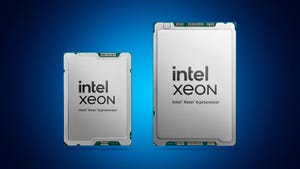
Insight and analysis on the data center space from industry thought leaders.
380V DC Power: Shaping the Future of Data Center Energy Efficiency380V DC Power: Shaping the Future of Data Center Energy Efficiency
Deploying DC power distribution in the data center instead of using the traditional AC design is one way to reduce power loss, eliminate unnecessary conversions and, ultimately, lower energy costs.
June 25, 2015

James Stark, P.E., is an Engineering and Construction Manager at Electronic Environments Corporation.
Traditional distribution practices employed to power data centers and their IT equipment have become antiquated as new standards emerge, driven by our need for new solutions that provide a higher level of efficiency without sacrificing reliability. In March of last year, Congress passed the Energy Efficiency Improvement Act of 2014 (H.R. 2126) and introduced the TENANT STAR certification with the goal of forging a new evolution of commercial data center energy efficiency practices. Although this Act was designed specifically to impact federally operated data centers, it is expected to affect the mission-critical facility industry as a whole, generating opportunities for energy efficiency best practices across the private and public data center sectors.
In the traditional electrical distribution scheme utilized by the majority of today’s data centers, energy must go through multiple conversions from Alternating Current (AC) voltage to Direct Current (DC) voltage, from the utility power grid, through the Uninterruptible Power Supply (UPS) and Power Distribution Units (PDU), out to the servers on the data center floor. The server power supplies then convert the voltage one last time from AC to DC, because the electronics inside the servers are resident DC devices. This process results in wasted energy, rejected in the form of heat, which then must be cooled, wasting even more energy and increasing operational cost. Deploying DC power distribution in the data center instead of using the traditional AC design is one way to reduce power loss, eliminate unnecessary conversions and, ultimately, lower energy costs.
In order to find a practical solution to energy loss within current power distribution systems, the Electric Power Research Institute (EPRI) teamed with the EMerge Alliance, an industry association that is creating standards for commercial implementation of DC power distribution, to advance the adoption of the 380-volt DC UPS solution. However, while 380V DC has been installed in many data centers around the world and acceptance of the technology has gained momentum over the last decade, its path to becoming the principle power standard within the data center industry still faces the challenge of the availability of 380V DC server power supplies.
By incorporating a 380V DC solution, only a single conversion from 480V grid-supplied AC to 380V DC is required to power the native DC data processing equipment. 380V DC can be distributed directly to the server power supplies, eliminating multiple conversions between AC and DC. Significant cost savings can be realized, reducing energy usage by 10 to 20 percent. 380V DC design also allows for easier integration of alternate renewable energy sources such as solar, wind and fuel cell power, since these are native DC sources.
380V DC is not only beneficial in theory; it has already been put to practical use, successfully reducing costs for data centers across the globe. In September of 2014, Quality Technology Services (QTS) debuted its latest facility, a 360,000-square-foot data center in Princeton, New Jersey, featuring 57,000 solar panels throughout a 50-acre solar farm, generating 14.1MW of direct current. Home to the 180,000-square-foot McGraw Hill data center, which requires 4MW of power to operate three of its core businesses, QTS is just one of hundreds of mission-critical facilities migrating to DC power distribution for enhanced energy efficiency.
The benefits of 380V DC power don’t stop there. Additional attractive features of this innovative solution include:
Up to 15 percent energy efficiency improvement due to reduced heat loss from conversions.
Elimination of harmonics, phase load balancing and other issues associated with AC power.
Lower CAPEX and maintenance costs due to the elimination of conversion equipment.
Enhanced reliability through simplified design.
More marketable data center space thanks to DC power’s capability to be plugged directly into equipment.
Additional OPEX reductions through integration of renewable energy sources such as solar panels.
380V DC power systems are the future of data center power distribution, forever changing the data center landscape as we migrate toward a cleaner, more energy efficient and sustainable industry.
Industry Perspectives is a content channel at Data Center Knowledge highlighting thought leadership in the data center arena. See our guidelines and submission process for information on participating. View previously published Industry Perspectives in our Knowledge Library.
About the Author
You May Also Like









